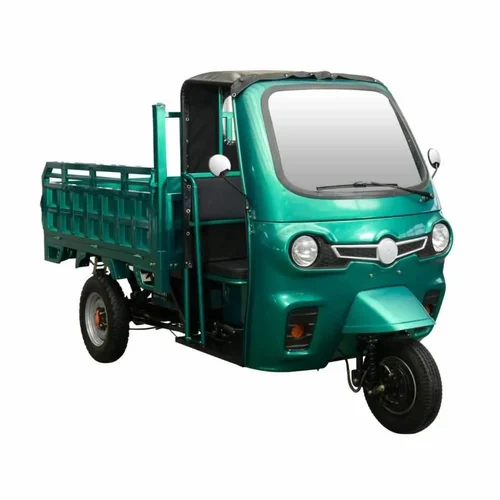
With rapid urbanization and the growing need for sustainable logistics, businesses are turning towards greener and more cost-efficient vehicles. One of the most innovative solutions in this segment is the Loading Auto. Designed for last-mile delivery and cargo transport, electric loading autos are gaining popularity in both urban and semi-urban areas.
In this article, we’ll explore the features, benefits, and future of electric loading autos, along with FAQs to help buyers make an informed decision.
What is an Electric Loading Auto?
An electric loading auto is a battery-powered three-wheeler designed to carry goods and materials. Unlike traditional diesel or petrol cargo autos, these vehicles run on rechargeable batteries, making them eco-friendly and cost-effective.
They are ideal for small businesses, logistics companies, e-commerce deliveries, and even local vendors who need to transport goods without spending heavily on fuel.
Why Electric Loading Autos are Becoming Popular
-
Cost Savings
Running an loader auto rickshaw costs significantly less compared to fuel-based autos. Electricity is cheaper than petrol or diesel, and maintenance costs are also lower since there are fewer moving parts. -
Government Support
Many state and central governments provide subsidies, tax rebates, and incentives for electric three-wheelers, making them more affordable. -
Eco-Friendly Transport
Electric autos reduce carbon emissions and noise pollution, helping cities become cleaner and more sustainable. -
Perfect for Last-Mile Delivery
With the boom in e-commerce, electric loading autos are the ideal solution for short-distance deliveries in congested areas.
Key Features of an Electric Loading Auto
-
Payload Capacity
Electric loading autos typically support a payload of 500–700 kg, depending on the model, making them suitable for various businesses. -
Battery & Range
Modern electric loading autos come with lithium-ion or lead-acid batteries that provide ranges of 80–150 km per charge. -
Low Maintenance
With fewer moving parts and no engine oil or gear systems, these vehicles require minimal servicing. -
Charging Options
They can be charged using standard electrical outlets or fast chargers. Some companies are even offering battery swapping facilities. -
Compact Design
Their small size and three-wheeler structure make them perfect for navigating narrow city lanes and crowded marketplaces.
Benefits of Using an Electric Loading Auto
-
Lower Operating Costs – Save up to 70% on fuel expenses.
-
Higher Profits for Businesses – Reduced costs mean better margins for delivery companies and local vendors.
-
Eco-Conscious Branding – Companies using EVs attract eco-friendly customers and improve brand image.
-
Government Incentives – Access to subsidies, tax benefits, and easy financing.
-
Future-Ready Mobility – Stay ahead of competition by adapting to clean and smart logistics solutions.
Industries Benefiting from Electric Loading Autos
-
E-commerce & Courier Services – For last-mile package deliveries.
-
Retail & Grocery Stores – For transporting goods locally.
-
Construction & Hardware – For moving lightweight materials within cities.
-
Restaurants & Food Chains – For bulk food deliveries.
-
Municipal Services – For waste collection and other utility transport.
The Future of Electric Loading Autos
As battery technology improves and charging infrastructure expands, E Rickshaw Loader will become even more efficient. Many manufacturers are focusing on:
-
Battery swapping technology for quicker turnaround times.
-
Longer ranges to cover extended routes.
-
Smart connectivity features like GPS, tracking, and fleet management.
-
Affordable financing options to support small businesses.
In the coming years, E Loader are expected to dominate the small cargo transport industry, paving the way for a cleaner and cost-efficient logistics ecosystem.
Conclusion
The Electric Auto is revolutionizing last-mile delivery and small cargo transport. With lower operating costs, government incentives, and eco-friendly benefits, they are fast becoming the go-to choice for businesses and local vendors alike.
As technology advances, these vehicles will only get better, offering greater range, smarter features, and even more cost savings. Investing in an electric loading auto today means embracing the future of sustainable transportation.
FAQs on Electric Loading Auto
Q1. What is the average range of an electric loading auto?
Most models offer a range between 80–150 km on a single charge, depending on battery capacity and load.
Q2. How long does it take to charge an electric loading auto?
Charging can take 4–8 hours with standard chargers. Fast charging and battery swapping reduce downtime significantly.
Q3. What is the payload capacity of an electric loading auto?
Typically, electric loading autos carry between 500–700 kg, though some models may support even higher loads.
Q4. Are electric loading autos suitable for long-distance transport?
They are primarily designed for short-distance and last-mile delivery. For long-distance hauling, larger EV trucks are better.
Q5. What kind of batteries are used in electric loading autos?
Most vehicles use lithium-ion or lead-acid batteries. Lithium-ion is more durable, lighter, and offers faster charging.
Q6. Do governments provide subsidies for electric loading autos?
Yes, under schemes like FAME-II in India and various state policies, buyers can avail subsidies and tax benefits.
Q7. Can small businesses afford electric loading autos?
Absolutely. With subsidies, financing options, and lower running costs, electric loading autos are highly economical for small businesses.
Q8. What is the lifespan of an electric loading auto battery?
Lithium-ion batteries usually last 4–6 years, depending on usage and charging habits. Lead-acid batteries may need replacement sooner.
Q9. Are spare parts and servicing easily available?
Yes, as EV adoption grows, most major cities have service centers and spare parts support for electric autos.
Q10. Can I convert my existing petrol/diesel loading auto into electric?
Some companies offer retrofitting solutions, but buying a new electric loading auto is generally more efficient and cost-effective.